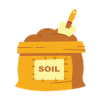Healthy Soil, Happy Plants: Techniques for Soil Improvement
Unless you’re a farmer or an avid gardener, it is unlikely that you’ll spend much more than a passing thought considering the soil.
But soil is an essential factor in healthy gardens, flower beds, and lawns. That’s why we, the Terrascape team, wanted to write this blog about the importance of healthy soil.
Whether you’re a new gardener or simply want beautiful landscaping, this blog is for you. Ready to learn about soil?
Let’s dig in!
Why is healthy soil important?
Let’s start by addressing the question underlying our soil discussion today. Why is soil important?
Soil forms the fundamental basis for life on earth.
Soil is to planet Earth like a foundation is to a house. Without a solid soil foundation, life on earth wouldn’t be possible. Healthy soil is critical for producing food, purifying water and the air, regulating climate, and so much more.
Healthy soil mitigates water erosion.
As soil health decreases, it becomes more prone to erosion. This, in turn, causes a more and more accelerated decline in soil health. Healthy soil has higher quantities of organic matter, making it more resistant to erosion as the organic matter allows the soil to absorb more water.
Healthy soil produces healthy plants and nutrient-rich crops.
We intuitively know that healthy soil will produce more nutritious crops and plants. Whether you’re growing vegetables in your garden or cultivating a luscious flower bed, nutrient-rich soil makes all the difference.
Soil helps regulate the earth's temperature.
Soil absorbs heat during the day and releases it at night, helping regulate daily temperatures. This is also true seasonally, as soil stores heat energy in the warmer seasons and releases it during the cold seasons.
Soil captures and filters pollutants and cycles nutrients.
Healthy soil filters substances that could otherwise cause pollution or harm, including both organic and inorganic matter. Soil is also vital for storing carbon, holding around twice the amount found in plants and trees.
Now that we’ve discussed why soil is important, let’s discuss what makes healthy soil.
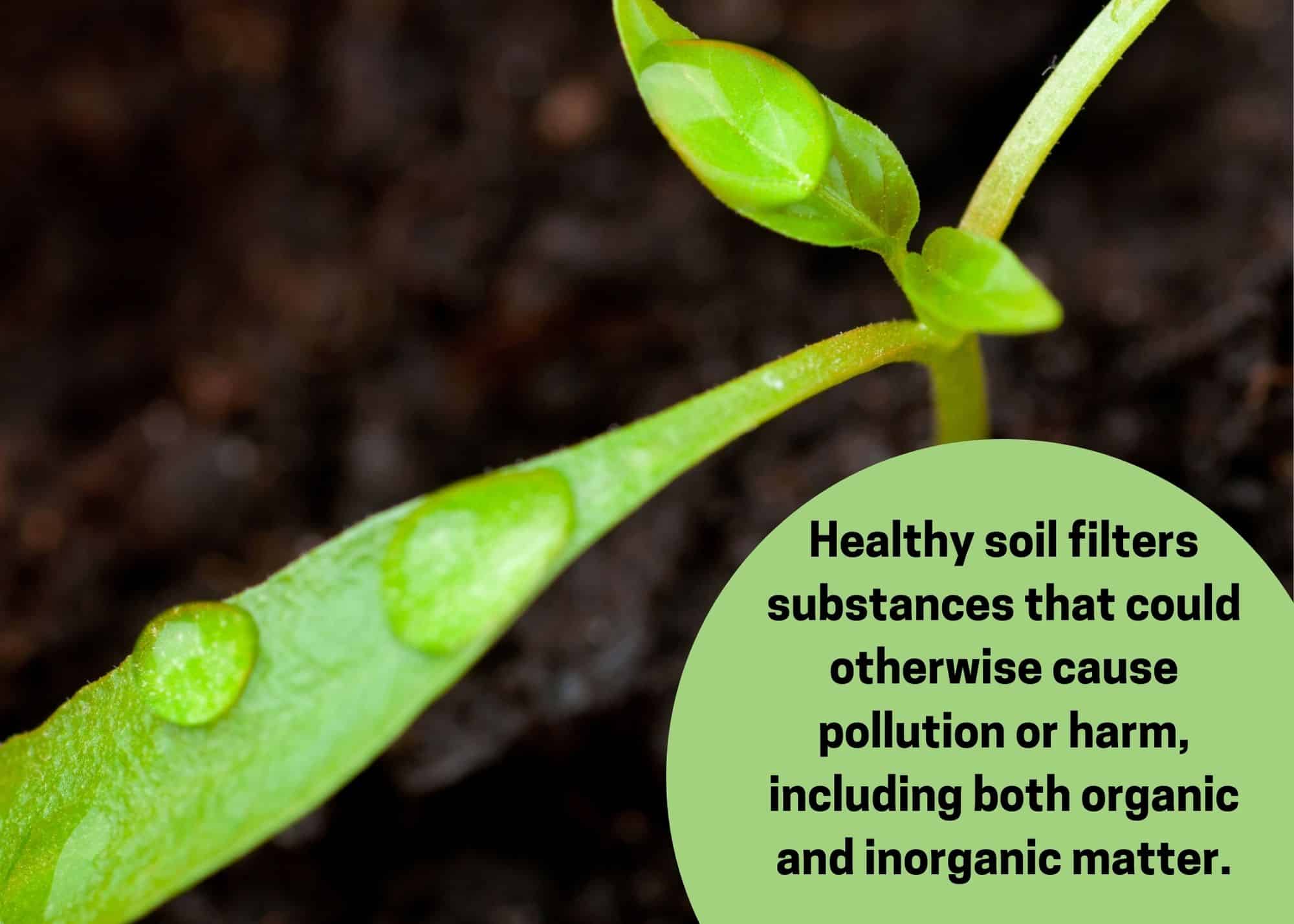
What makes soil healthy?
While it's somewhat challenging to assess the exact health of soil, a few elements are always present in healthy soil.
-
Good water regulation
As mentioned earlier, healthy soil absorbs more water, which mitigates erosion. In fact, healthy soil can hold up to twenty times its weight in water.
-
Microbial diversity
Healthy soil will have a diverse microbiome. This means various beneficial fungi, bacteria, and actinomycetes exist. To assess whether your soil’s microbiome is healthy, test your soil with an at-home test or hire a professional.
-
Free of toxins and pollutants
Using herbicides and pesticides can be helpful for weed and pest control. But be careful not to overuse them. Herbicide residue and acids can pollute the soil. You could also consider using other, more natural weed/pest-control methods.
-
Plenty of organic matter
Have you ever looked at the rich, black soil of a forest floor? The soil is rich here because of all the organic matter (leaves, fallen branches, and more) present. Healthy soil will have plenty of organic matter. Compost, grass clippings, straw, and mulch are other examples of organic matter
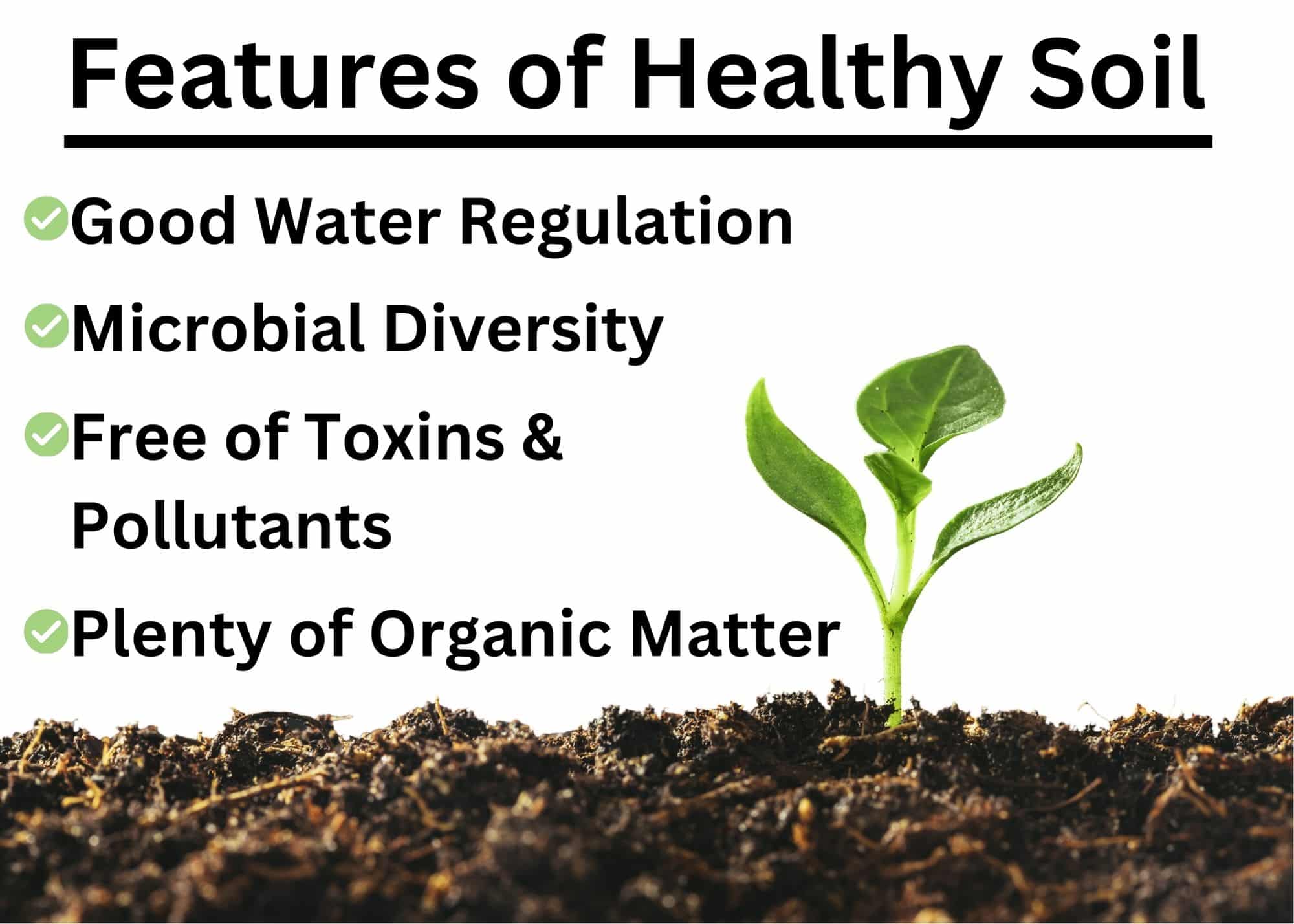
Soil types
The million-dollar question on most people’s minds is simple. “How can I get healthy soil?” But that’s jumping over an important step.
Understanding the soil you have is the vital first step in achieving soil health. Let's break down some common soil types found in yards around the United States.
-
Sandy Soil
Sandy soil is one of the poorest soil types for growing plants. It’s made up of worn-down rock and sand particles and doesn’t contain many nutrients because it lacks humus. It's generally lighter-colored and lighter-weight with a gritty texture.
This soil type is excellent for drainage, and while most plants have a hard time with sandy soil, some, like irises, some herbs, and succulents, actually prefer it. Some root vegetables like carrots and potatoes can also do well in sandy soil.
-
Silty Soil
Silty soil is lightweight, holds moisture, and is very fertile, making it an excellent soil for agriculture. Silty soil is comprised of medium or fine particles, depending on soil health and other factors. Especially in its fine state, silty soil is prone to erosion, so developing sound drainage systems is essential. Silty soil can also become compacted if exposed to heavy traffic.
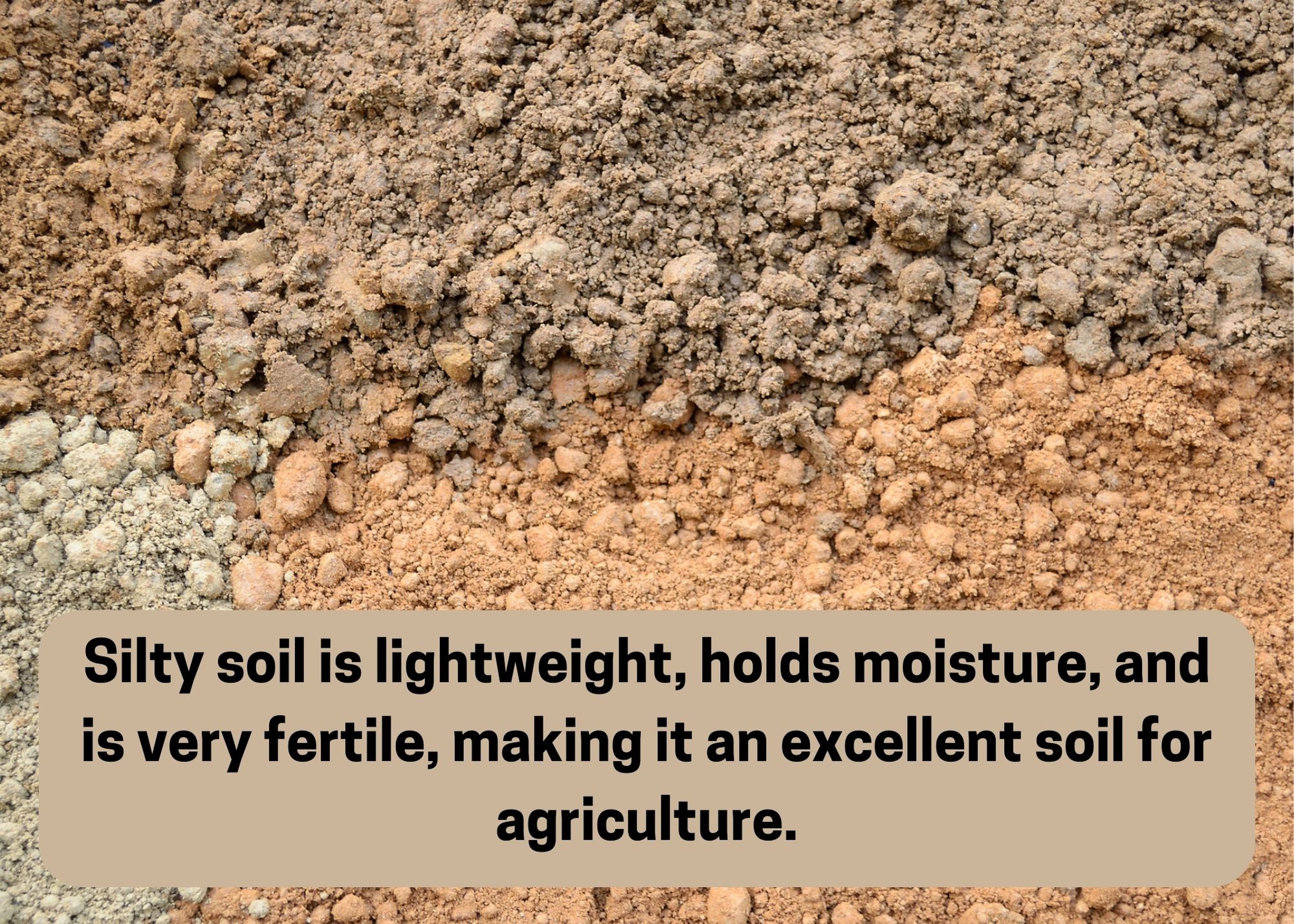
-
Clay
Clay soil is composed of tiny, tightly packed particles. It is dense and heavy, making it difficult for air and water to penetrate. Once saturated, however, it drains very slowly. Clay soil is sticky when wet and almost rock-hard when dry. Despite these rather harsh conditions, clay soil is actually nutrient-rich. The key to harnessing these nutrients? A quality drainage system.
-
Chalk
Chalky soil is usually shallow and can vary in presentation. It can be light or heavy, but it is made up of larger particles and rocks, causing it to drain freely. If clay is mixed in, it will likely have higher nutrient levels. A distinct feature of chalky soil is that it is alkaline. This can be challenging, as most plants need acidic soils.
-
Loamy
The queen of soils, loamy soil is a mixture of clay, sand, and silt. This balanced combination avoids the weaknesses of the other soil types, giving it good drainage and making it ideal for crops. It's easy to cultivate and rich in nutrients.
Specialty Soils
Specialty soils aren’t found in the wild but are created with organic materials. They create a rich base for gardens, flower beds, and lawns. At Terrascape Supply, we offer three specialty soils.
- Screened Topsoil: High-quality topsoil with rocks and large debris removed. Recommended coverage of 6-8 inches deep. Pro Tip: While this soil will be free of rocks and sticks and nice to work with, it is not necessarily always very nutrient-rich. Consider amending with mushroom compost to increase the soil nutrients.
- Mushroom Compost: Composed of straw, horse manure, and other organic matter, this soil does wonders at supplying nutrients to the soil. It supplies both macronutrients (nitrogen, phosphorous, potassium) and micronutrients (calcium, magnesium, iron). It’s high in calcium, increasing soil alkalinity. Basically, it is great for garden plants but not good for berries, rhododendrons, or other plants that like a more acidic soil. In addition to mushroom compost being an excellent mulch for garden plants, many contractors use mushroom compost as a mulch over grass seed to help retain moisture. It has a similar function as straw, but it doubles as a fertilizer. Recommended coverage of 2-3 inches deep.
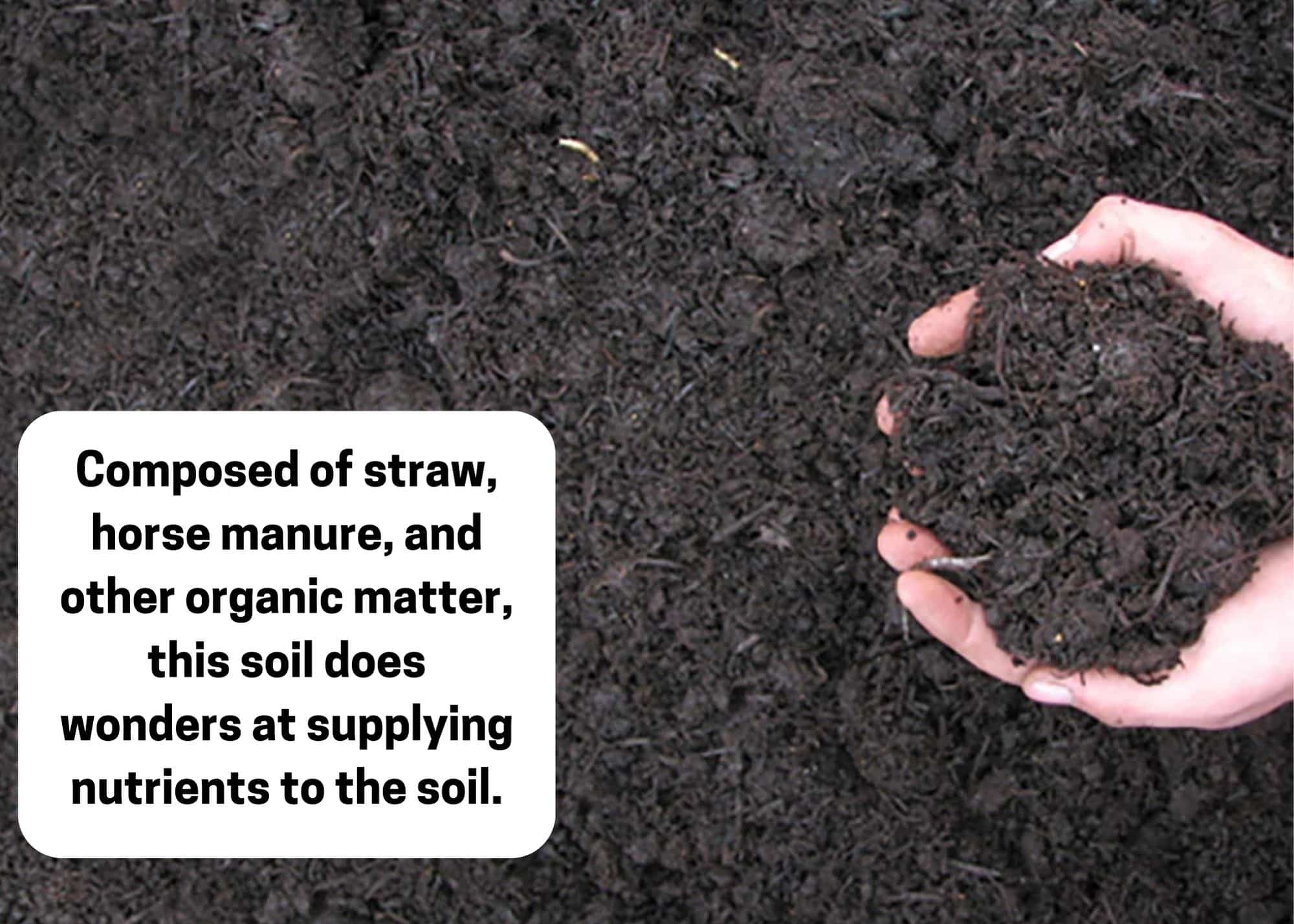
Gardening Soil: A mix of mushroom compost and screened topsoil, gardening soil is excellent for starting a garden, raising flower beds, and more. Recommended coverage of 4-6 inches. Pro Tip: Garden soil is great for planting grass in, but not necessarily filling holes since it will settle overtime.
Testing and Improving Your Soil
After you’ve determined what soil type you have, you’ll want to test it to see if it’s lacking nutrients (or had too much of one nutrient!). Even if you’re blessed with loamy soil, you’ll need to monitor it so nutrients don’t deplete. Let’s answer some essential questions.
What is soil testing?
Soil testing involves gathering soil samples and sending them to a lab for analysis. The soil is tested for nutrient levels, organic matter content, pH levels, microbial activity, and more in the lab. Many lawn care companies offer soil testing.
Can I test my own soil?
Yes! You can purchase a soil test kit at most hardware or garden stores. Some are at-home digital or chemical tests, while others allow you to mail your samples to a lab for professional testing. Not all tests give great results, and professional testing is usually more reliable.
What is the process of soil testing?
First, you’ll want to start by gathering samples. Dig a few holes about 6 to 8 inches deep around the area you want to test. Next, take a slice of soil from the hole. Take the middle portion of each of the samples and mix them thoroughly. Finally, let them dry at room temperature before placing them in a sealable container and sending them to a lab for testing. If you have a home-testing kit, follow the enclosed directions.
How much does soil testing cost?
This varies significantly, ranging from as little as $10 to $40 or more. Check with your local soil testing lab, garden center, or lawn care company for an exact price.
How often should I test my soil?
Experts generally recommend testing your soil every 1-3 years. Some do say every 3-5 years is sufficient. What you choose depends on the quality of your soil, your budget, and the health of your plants. For example, if you see your yard is struggling or you know that you have sandy soil, testing more frequently is better.
When should I test my soil?
This will vary depending on where you live and what soil you want to test (e.g., lawn, garden, field, etc.). Generally, however, fall is a good time for gardens and flower beds. This allows you to make improvements before winter. For more specific recommendations, reach out to your local garden center.
Tips to improve your soil
There are many ways to improve your soil. Here are a few tips based on soil type, but be sure to use your test results as a guide.
- Sandy - Use plenty of fertilizer and till in sizable organic matter. Use groundcover plants to help retain moisture, and don’t dig up the soil in the fall. This tends to make it break up and become even finer.
- Silt - Add composted organic matter for better drainage and additional nutrients. Since silty soil is so prone to erosion, use ground cover or mulch to prevent bare patches of soil.
- Clay - Add bulky organic matter like compost and manure to the soil in the fall. Clay soil is acidic, so you may need to add lime to neutralize the acidity, depending on what you want to grow.
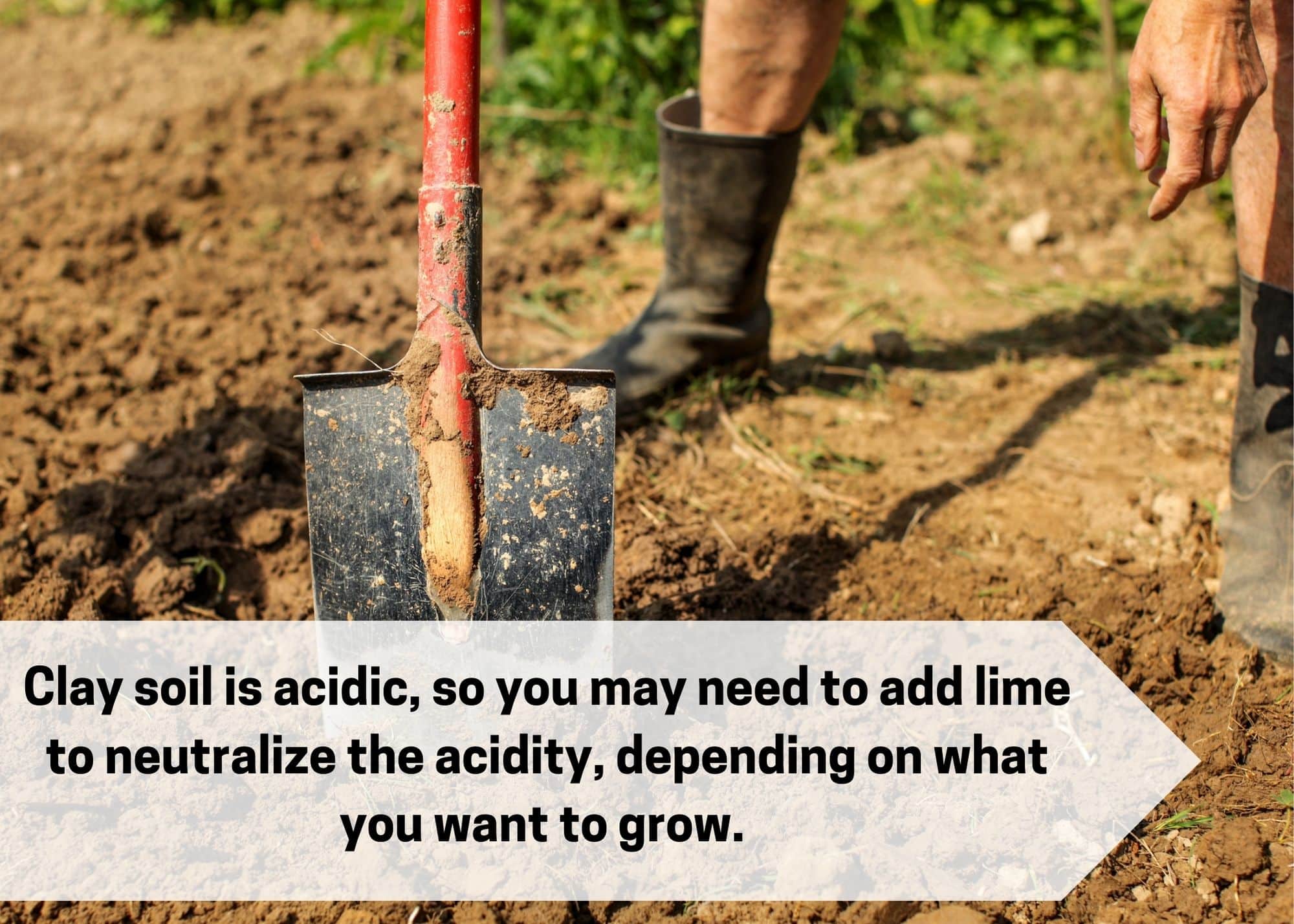
- Chalky - Add lots of organic matter regularly. Nutrients tend to diminish quickly in chalky soil, so regular care is needed to stay fertile. Depending on how compacted the soil is, you may need to break it up so roots can spread and water can reach them. Mulching helps maintain moisture, and plants like crimson clover and vetch add nitrogen to the soil.
- Loamy - Although loamy is the best soil, it still needs maintenance to stay healthy. Add organic matter, compost, and mulch regularly, and be sure to rotate crops.
How Terrascape Supply Can Help
Soil is the unseen key to plant health. We hope you found this blog helpful for identifying and maintaining your soil!
If you enjoyed this blog, you might also enjoy the following:
- The Ultimate Guide: Exploring the World of Landscaping Materials
- A Simple Guide to Mulch: Plus Our Top Seven Mulching Tips!
At Terrascape Supply, we are a one-stop shop for all your landscaping needs. We offer mulch, soil, stone, outdoor structures and furniture, and so much more!
If you have questions or would like to place an order, contact us today! We look forward to hearing from you!


